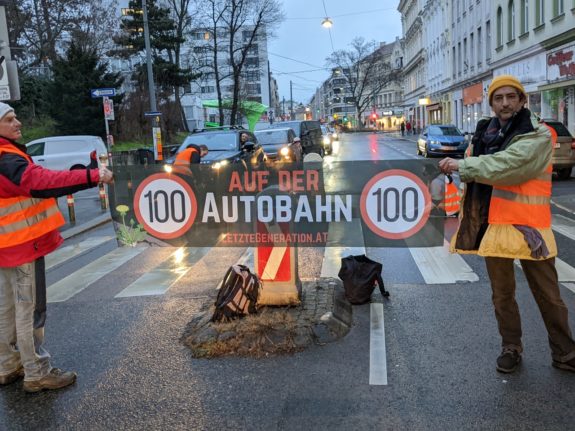E-cards without photos will be blocked
Starting January 15th, most e-cards lacking a photo will be invalid in Austria – affecting some 90,000 people who could have their cards blocked despite being insured.
In 2020, Austria announced it would start issuing a “new generation” of e-cards, which would have a photo of the insured person as an extra security measure.
However, if the government does not have your picture – which can happen if you don’t need a visa to stay in the country and have no Austrian driver’s license (a common situation among EU residents and pre-Brexit Brits), you will need to submit a photograph.
You can quickly check if there is a photo currently available for you HERE.
The only legal exceptions to the photo requirements are people younger than 14 or older than 70 or people classified as care levels 4, 5, 6 or 7.
You can check out how and when to change your e-card HERE.
The end of ‘cold progression’
The Austrian government announced a significant tax reform in September 2023, with changes set to take effect in 2024, as reported by The Local.
One of the key reforms involves eliminating “cold progression” in taxation, a situation where income tax brackets do not adjust for inflation. Previously, individuals were taxed based on fixed brackets; for instance, income below €11,000 was exempt from taxes. Under the new system, these brackets will now be indexed to inflation.
Starting in 2024, the basic amount will be increased to €12,816, ensuring that any income below this threshold will be tax-free in Austria.
The adjusted brackets will result in a 20 percent tax rate for income between €12,816 and €20,818 annually.
Moreover, various other tariff levels will also see increases, ranging from approximately seven percent to close to ten percent.
For instance, income between €20,819 and €34,513 will be taxed at a rate of 30 percent. The tax rate for earnings between €34,514 and €66,612 will be 40 percent. Income within the range of €66,613 to €99,266 will incur a 48 percent tax rate. Any earnings beyond this limit will be taxed at a rate of 50 percent.
READ ALSO: How high is the tax burden in Austria compared to other countries?
Tax allowances are set to increase
Child allowances, designed to offer tax relief to families with lower incomes, will be raised from the current rate of €550 per year to €700.
Furthermore, childcare subsidies provided by employers—like offering daycare facilities—currently face taxation in Austria. The first €1,000 of these subsidies is presently tax-free. However, the government intends to increase this threshold to €2,000, providing more tax relief for such employer-provided childcare benefits.
Additionally, the tax reform plan includes an adjustment in deduction amounts. Presently, these deductions are automatically adjusted to two-thirds of the inflation amount.
Under the new plan, this adjustment will be set to 100 percent of the inflation rate. This means that various tax credits individuals can claim on their annual tax returns—such as single earner, single parent, and dependent tax deductions, along with transport and pensioner tax credits—will increase in line with inflation.
READ ALSO: Everything you need to know about filing taxes in Austria
Budget cuts for AMS
The Public Employment Service (AMS) will have a decrease in public funding in 2024, as The Local reported.
The active labour market policy subsidy budget is expected to decrease to €1.1 billion from €1.3 billion in 2023. This is due to the end of special programs such as the “Aktion Sprungbrett” for the long-term unemployed and the expectation of fewer unemployed people.
The subsidy budget finances, among other things, qualification, counselling and support services, wage cost subsidies for companies and temporary employment in non-profit labour leasing or socio-economic enterprises. Unemployment benefits and unemployment assistance are insurance benefits paid out of unemployment insurance – so they wouldn’t be affected.
The AMS expects the average subsidy per capita to fall to €3,929 in 2023 and to €3,516 in 2024.
READ ALSO: How long do I have to work for in Austria to get unemployment benefits?
New ‘ORF contribution’ replaces GIS
The much-hated GIS fee the one homes with a radio or TV connection have to pay to support public broadcaster ORF is coming to an end. However, it may be replaced by an even more controversial payment, the new ‘ORF contribution’.
This payment will have to be made by all households, regardless of whether or not they have TV and radio connections – many people would just resort to using projectors and monitors instead of TVs if they only stream their content, avoiding the GIS payment. The change was necessary after Austria’s Supreme Court judged the GIS unconstitutional, as those who didn’t pay the fee still had access to ORF content via the website and streaming platforms.
Instead of adding a paywall, the federal government agreed on a “payment for all” solution. The fee amounts to €15.30 a month and then includes a provincial tax to finance local cultural endeavours, so the final tab will be different depending on the state. Vienna, Lower Austria, Upper Austria, Salzburg and Vorarlberg announced they’d waive their state tax.
READ ALSO: Everything you need to know about Austria’s new ORF/GIS TV fee
Holidays and celebrations
There are no less than 13 public holidays in Austria and the first one of the year – besides January 1st, is January 6th.
In 2024, January 6th falls on a Saturday, so prepare for a long weekend with stores and shops closed.
Like most national holidays, this one also has religious roots – more specifically, Catholic roots. On January 6th, Catholics celebrate the revelation of God incarnate as Jesus Christ, hence the name Epiphany, and a celebration of the “adoration of the Magi” when the three kings visited the newborn Christ.
In Austria, the holiday is known as Heilige Drei Könige or Three Holy Kings.
READ ALSO: EXPLAINED: Why is January 6th a public holiday in Austria?



 Please whitelist us to continue reading.
Please whitelist us to continue reading.
Member comments